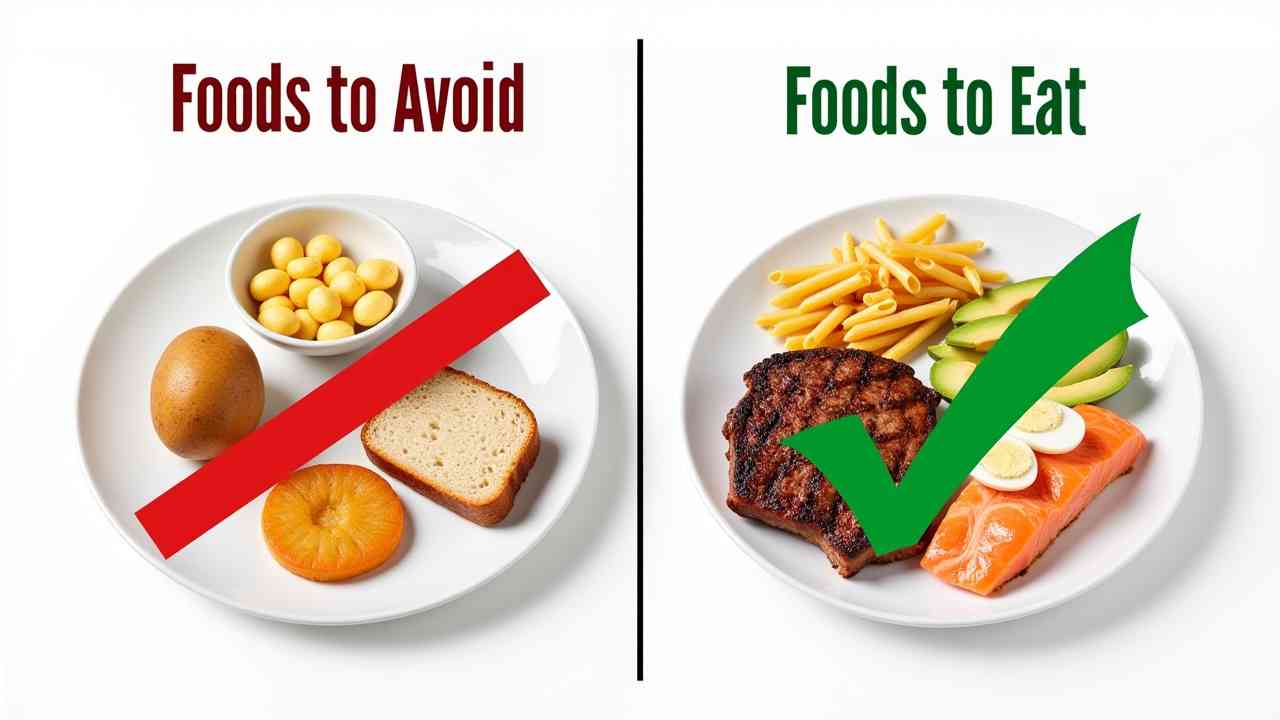
⚠️ The 2-Week No-Carb Diet Plan (A Guide & Health Warning)
🥩 The 2-Week No-Carb Diet Plan: A Guide to the Kickstart Phase 🥩
❗ CRITICAL MEDICAL WARNING: A "no-carb" diet is an extremely restrictive eating plan. It should only be undertaken for a short period and ideally with a doctor's guidance. It is not a sustainable long-term diet and can have significant side effects. This guide is for informational purposes only.
A two week no carb diet plan is often used as a rapid kickstart. It is designed to quickly shift your body's metabolism. This is essentially the strict induction phase of a ketogenic diet. It is a powerful but challenging approach.
The goal is to force your body into a state of ketosis. This is where it burns fat for fuel instead of carbohydrates. This guide will explain what this short-term plan involves. Let's look at this strict but effective reset. ⚠️
🤔 What is the Goal and What Results Can You Expect?
The primary goal is to deplete your body's glucose stores. This forces it to start producing ketones from fat. This metabolic shift is the main objective. It is not about long-term fat loss in two weeks.
You will likely see a rapid drop on the scale in the first week. This can be very motivating. However, it is crucial to understand that most of this initial loss is water weight, not fat. When you cut carbs, your body sheds a lot of stored water. Real fat loss is a much slower process.
✅ What Foods Can You Eat on This Plan?
The two week no carb diet plan food list is very simple. It focuses entirely on protein and fats. You should eat until you are full and satisfied. Do not worry about calorie counting during this phase.
- Meat: All kinds of meat are allowed. Beef, lamb, and pork are great choices. Fatty cuts are encouraged.
- Poultry: Chicken ("tavuk") and turkey are staples. Eat the skin for extra fat.
- Fish: All fish is good, especially fatty fish like salmon and sardines.
- Eggs: A perfect and versatile food for this plan.
- Fats and Oils: Use healthy fats like butter, ghee, tallow, and olive oil ("zeytinyağı").
- Some Dairy: Hard cheeses ("peynir"), butter, and heavy cream are generally allowed in moderation.
🚫 What Foods Must You Absolutely Avoid?
This is the most important part of the diet. For two weeks, you must be extremely strict. You must avoid all sources of carbohydrates and sugar. This means:
- No Sugars: No candy, desserts, soda, or honey.
- No Fruits: All fruits are off-limits during this phase.
- No Grains: No bread, pasta, rice, cereal, or oats.
- No Starchy Vegetables: No potatoes ("patates"), corn, or peas.
- No Legumes: No beans or lentils ("mercimek").
🗓️ What Does a Sample 3-Day Plan Look Like?
This is a simple template. Remember to eat until you are full. The crisp autumn weather here in Bursa is perfect for these hearty, warming meals.
Day 1
- Breakfast: Scrambled eggs cooked in butter with a side of bacon.
- Lunch: A bunless burger patty, topped with a slice of cheese.
- Dinner: A large ribeye steak, pan-seared in butter.
Day 2
- Breakfast: Leftover steak and a few eggs.
- Lunch: A can of tuna mixed with mayonnaise.
- Dinner: Baked salmon with crispy skin.
Day 3
- Breakfast: A few sausage patties (check for no added sugar).
- Lunch: Grilled chicken thighs.
- Dinner: A large portion of ground beef, seasoned with salt.
- What Are the Risks and Side Effects?
When you start this diet, you will likely experience the "keto flu." This is a collection of symptoms as your body adapts. It can include headaches, fatigue, nausea, and irritability. It is crucial to drink plenty of water and add extra salt to your food to manage these symptoms.
This diet is nutritionally incomplete. It lacks fiber and many essential vitamins. It is not a healthy long-term solution. After the two weeks, the best approach is to transition to a more balanced, low-carb diet. This would include plenty of non-starchy vegetables. Always talk to your doctor before starting such a restrictive plan. 🩺